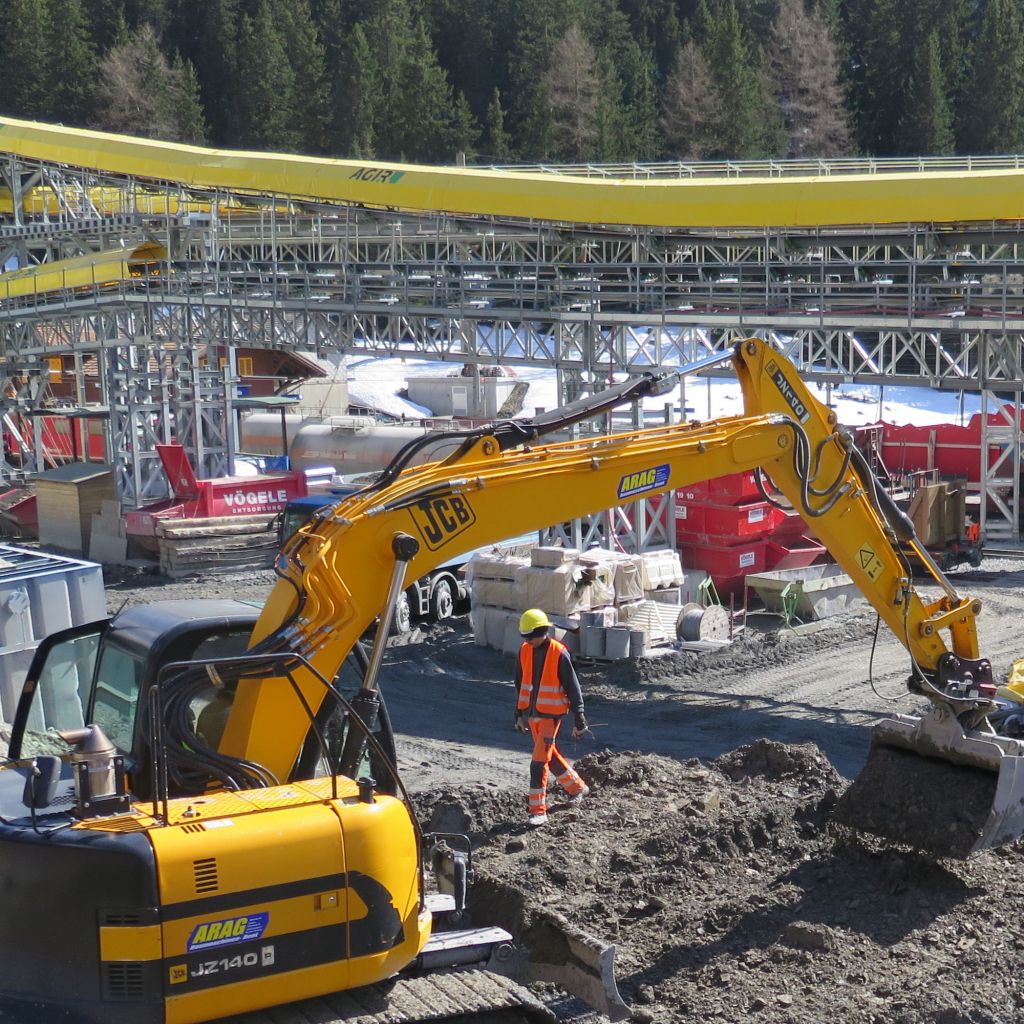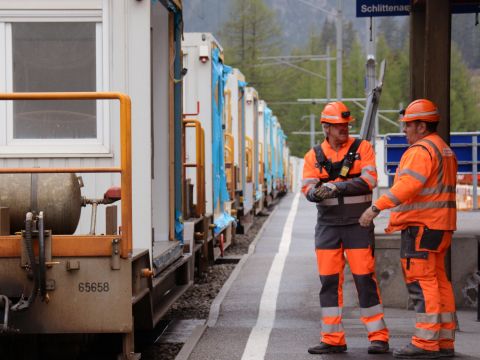The excavated material will be recycled

The freshly excavated rock is to be evaluated in the tunnel to determine its characteristics, and assigned to a class of materials. It is then to be transported to the handling facility in Preda, where the material is to be offloaded and placed in interim bunker storage before being sent to its final destination.
The excavated material will be recycled
Efforts are to be made to recycle as much excavated material as possible. The excavated rock can be recycled for various purposes, depending on its material properties. It is therefore to be classed into four quality categories for the following potential applications:
|
Material class 1 |
For use as hardcore/track gravel |
||||
|
Material class 2 |
For aggregates (concrete aggregate, gravel-sand mixture) or bulk hardcore |
||||
|
Material class 3 |
For non-demanding hardcore or filling operations |
||||
|
Material class 4 |
Non-recyclable (destined for landfill) |
In the new Albula Tunnel project, class 1 raw materials are prepared as track gravel for use along the entire railway network of the RhB. Class 2 rock material is broken up into aggregate, sent to interim storage and used in concrete aggregate or sand/gravel mix for local road construction. Excess material is removed by rail. Unsuitable rock material belonging to classes 3 and 4 cannot be used, and is disposed of in the landfill at Las Piazzettas.
Geological forecasts predict the following yields of valuable materials along with the excavated rubble:
|
Track gravel |
22,300 to 27,900 metric tons |
||||
|
Aggregate |
164,500 to 286,500 metric tons |
Raw material belonging to class 1 is to be processed at the facility in Preda to produce track gravel, and most of it is carried off by train. The waste components are to be processed in the gravel plant, along with rock belonging to material class 2, to produce aggregate of various qualities. If there is a lack of demand or capacity bottlenecks in the gravel plant, the rock is to be sent by conveyor belt for interim storage at Las Piazzettas.
Rubble belonging to material class 3 is to be placed directly on the conveyor belt at the installation facility, and transported to the landfill at Las Piazzettas to be placed in interim storage. If there is subsequently a need for bulk hard-core, the material can be placed on the conveyor belt and sent back to the installation facility. Otherwise it is to be definitively disposed of as landfill. Class 4 material is to be placed directly on the conveyor belt and immediately disposed of as landfill.

